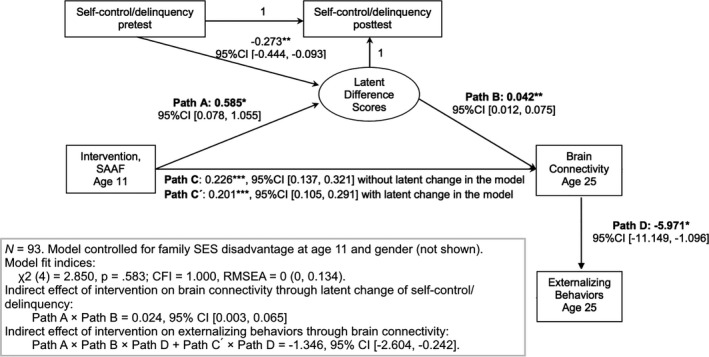Figure 2.

The figure shows our structural equation model with intervention status, gain in self‐regulation, brain connectivity, and present‐day externalizing symptoms. To unpack these effects, higher brain connectivity between the hippocampus and ventromedial portions of the prefrontal cortex (vmPFC) was found for the Strong African American Families (SAAF) intervention participants (Path C). Participation in SAAF was associated with statistically significant increases in self‐regulation (Path A). Path B indicated that higher brain connectivity at age 25 was positively associated with increase in self‐regulation (a latent difference score). Path C′ indicates that increases in self‐regulation partially explained the relation between intervention status and higher brain connectivity at age 25. DG‐vmPFC connectivity was associated with externalizing behaviors at age 25 (higher connectivity relating to lower symptoms; Path D). Finally, the indirect pathway from SAAF to externalizing behaviors through brain connectivity was statistically significant (Path A × Path B × Path D + Path C′ × Path D). *p < .05. **p < .01. ***p < .001.
